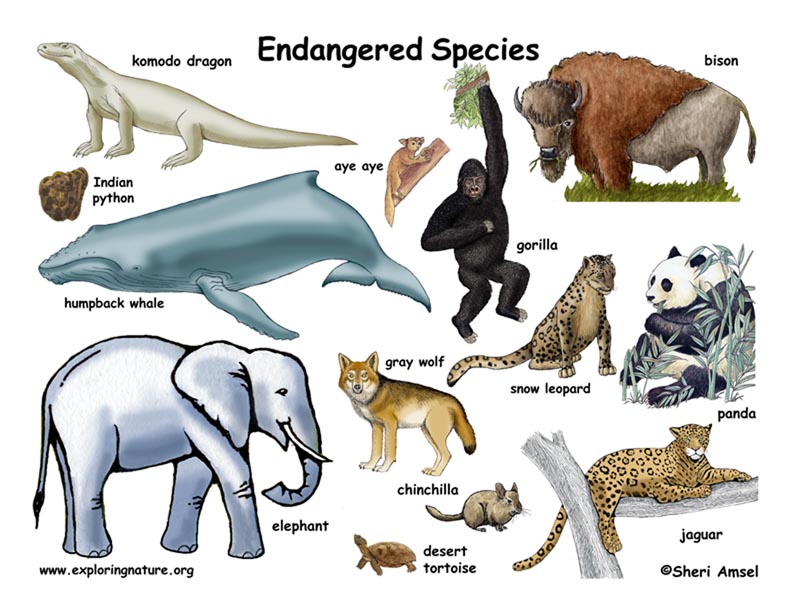An endangered species is a type of organism that is threatened by extinction. Species become endangered for two main reasons: loss of habitat and loss of genetic variation.
Loss of Habitat
A loss of habitat can happen naturally. Dinosaurs, for instance, lost their habitat about 65 million years ago. The hot, dry climate of the Cretaceous period changed very quickly, most likely because of an asteroid striking the Earth. The impact of the asteroid forced debris into the atmosphere, reducing the amount of heat and light that reached Earth’s surface. The dinosaurs were unable to adapt to this new, cooler habitat. Dinosaurs became endangered, then extinct.

Human activity can also contribute to a loss of habitat. Development for housing, industry, and agriculture reduces the habitat of native organisms. This can happen in a number of different ways.
Loss of Genetic Variation
Genetic variation is the diversity found within a species. It’s why human beings may have blond, red, brown, or black hair. Genetic variation allows species to adapt to changes in the environment. Usually, the greater the population of a species, the greater its genetic variation.
The Red List
The International Union for Conservation of Nature (IUCN) keeps a “Red List of Threatened Species.” The Red List defines the severity and specific causes of a species’ threat of extinction. The Red List has seven levels of conservation: least concern, near threatened, vulnerable, endangered, critically endangered, extinct in the wild, and extinct. Each category represents a different threat level.
Species that are not threatened by extinction are placed within the first two categories—least concern and near-threatened. Those that are most threatened are placed within the next three categories, known as the threatened categories—vulnerable, endangered, and critically endangered. Those species that are extinct in some form are placed within the last two categories—extinct in the wild and extinct.

Classifying a species as endangered has to do with its range and habitat, as well as its actual population. For this reason, a species can be of least concern in one area, and endangered in another. The gray whale, for instance, has a healthy population in the eastern Pacific Ocean, along the coast of North and South America. The population in the western Pacific, however, is critically endangered.
I will put just one video in this GLOpinion, but I hope other authors will recognize the problem and use our tool - video - to add more videos about endangered species.




Share the News